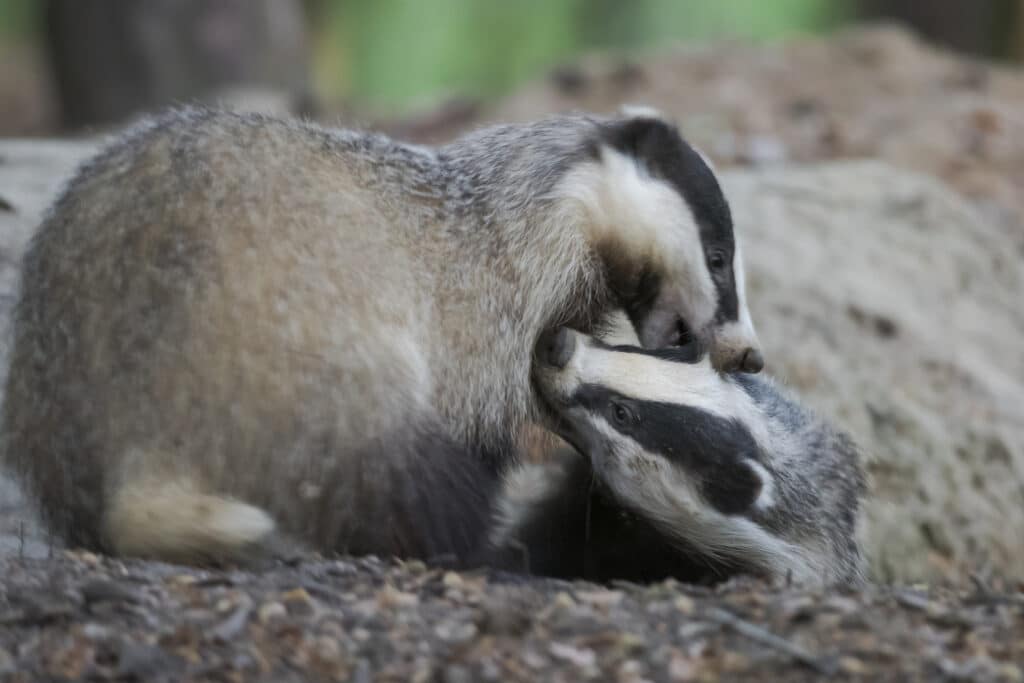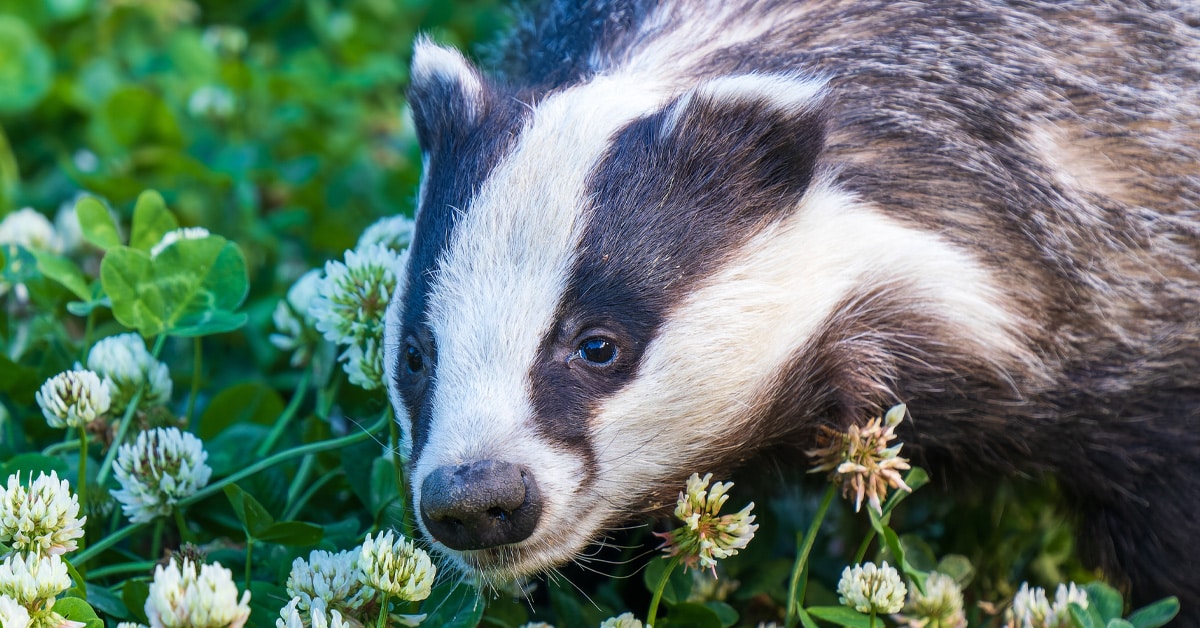A recent study in Northern Ireland has found that cows are more likely to transmit bovine tuberculosis (bTB) through contact with each other, than through contact with badgers.
The research was conducted by the Agri-Food and Biosciences Institute (AFBI), and the findings were published to the public on 25 May 2023.
The researchers used samples and data of cows and badgers from the Department of Agriculture, Environment and Rural Affairs (Daera)’s Test/Vaccinate/Remove (TVR) strategy, which took place between 2014 and 2018 in a 100km² ‘hotspot’ in County Down. TVR involves the capture, and then murder, of badgers who test positive for bTB, while vaccinating badgers who test negative.
These new findings contradict British government propaganda, which scapegoats the badger with very little sound scientific evidence to back it up. Farmers Weekly reported:
“Scientists found that in the TVR zone, cattle-to-cattle transmission was “by far the most common” form of disease spread observed, while badger-to-badger transmission was undetected.”
Cow to badger transmission “considerably more common”
Farmers Weekly went on to say:
“However, signals of inter-species transmission (both cattle-to-badger and badger-to-cattle) were detected as both hosts swapped closely related strains of bacteria.
While being highly variable, cattle-to-badger transmission appeared to be considerably more common than badger-to-cattle transmission.”
“The absence of any strongly supported badger-to-badger transmission events in TransPhylo, along with the observation that badger landscape genetic structure is not associated with pathogen genetic structure, is suggestive that badgers may not be playing a major role in disease transmission events.”
Cow movements as factor
A recent report, A bovine tuberculosis policy conundrum in 2023, which is authored by independent researchers, veterinarians, and epidemiologists critical of the badger cull in England, analysed the results of the Northern Ireland study, as well as other studies from the area. The authors concluded that the frequent movement of cows in Northern Ireland, either from farmland to farmland or to and from marketplaces, maximises “livestock contact and hence disease risk exposure.”
The authors said of the recent research:
“Eight lineages of M.bovis were circulating in the study area, seven of which were considered non-endemic, imported by cattle trading and movements.”
Infection “proliferated locally” by cows
Other UK studies back up the Northern Ireland findings. For example, a 2019 study in Gloucestershire found that cows were almost twice as likely to catch bTB from other cows than from badgers.
Another study examined 610 badger carcasses found dead on roads in Edge Areas over the period 2016–2017. An Edge Area is the buffer zone between the areas with cows at a high risk of bTB, and those with a low risk of the disease. The authors of A bovine tuberculosis policy conundrum in 2023 said of these findings:
“The study concluded that cattle to cattle infection is the more likely cause of disease proliferation in…five areas and quite possibly in all of them. This suggests that Edge Area infection is arriving via cattle movement and being proliferated locally by cattle, not wildlife.”

Daera is unlikely to listen
The latest Northern Ireland study – as well as the findings of previous studies – is extremely significant, not least because it challenges Defra and Daera’s dangerous narrative. The fate of Northern Ireland’s badgers is looking extremely bleak: the cull which has ravaged badgers in England is going to be introduced over the water, and is likely to have dire consequences for badger numbers.
Daera has said that it will introduce culls in areas of “higher-than-average badger social group density and prolonged high density of bTB breakdown herds”. These “intervention areas” will be at least 100km² each. Companies have already submitted their expressions of interest, and will be able to submit a full application to take part the upcoming cull.
As Protect The Wild has already reported, Daera is advised on the cull by the biased TB Eradication Partnership (TBEP). Prior to the latest Northern Ireland research findings being published to the public, the men dismissed the TVR stategy that took place in County Down, saying:
“An alternative to proactive culling is to utilise the Test/Vaccinate/Remove (TVR) model that has been researched in NI. There remains relatively little available information to allow the TBEP to assess this. This research study was not designed to investigate the effectiveness of TVR intervention on bTB in cattle and, as such, the TBEP is unable to recommend this approach as a method for the eradication of bTB at this time.”
Rather, the men recommend the widespread murder of badgers over all other methods.
When Daera announced its bTB eradication strategy in 2022, Edwin Poots, Minister of Agriculture, Environment and Rural Affairs said:
“I do not believe there is any argument about whether badgers can contract bTB and act as a reservoir of bTB within the environment. They therefore have an important role in the disease picture, which must be addressed.”
Like its counterpart Defra, the Northern Ireland government department is intent on appeasing farmers, providing them with a convenient scapegoat – the badger – so that they won’t have to systematically change farming methods. We will, no doubt, see that these latest findings are ignored. Like in England, it will be down to anti-cull activists on the ground to physically protect badger setts.

